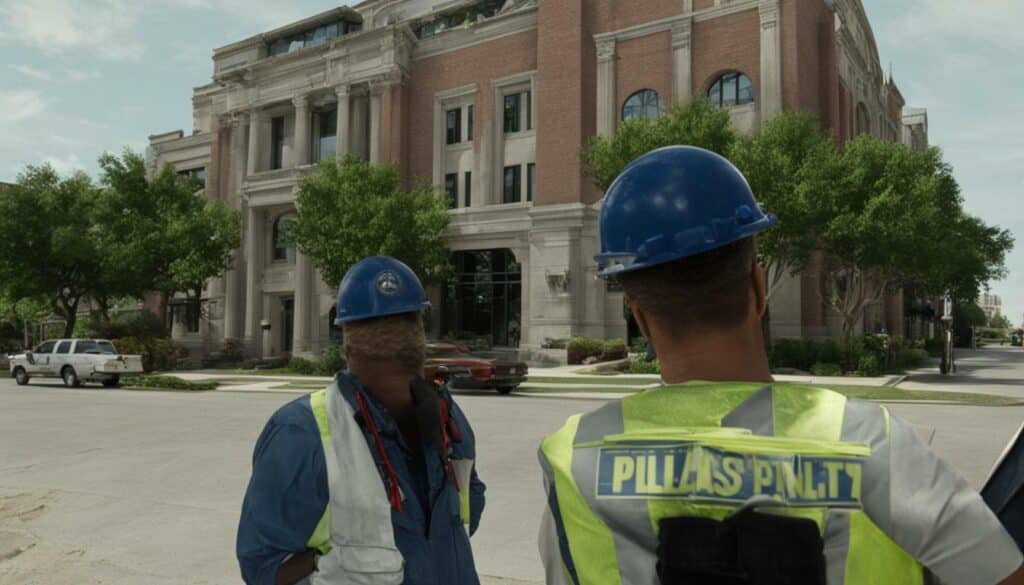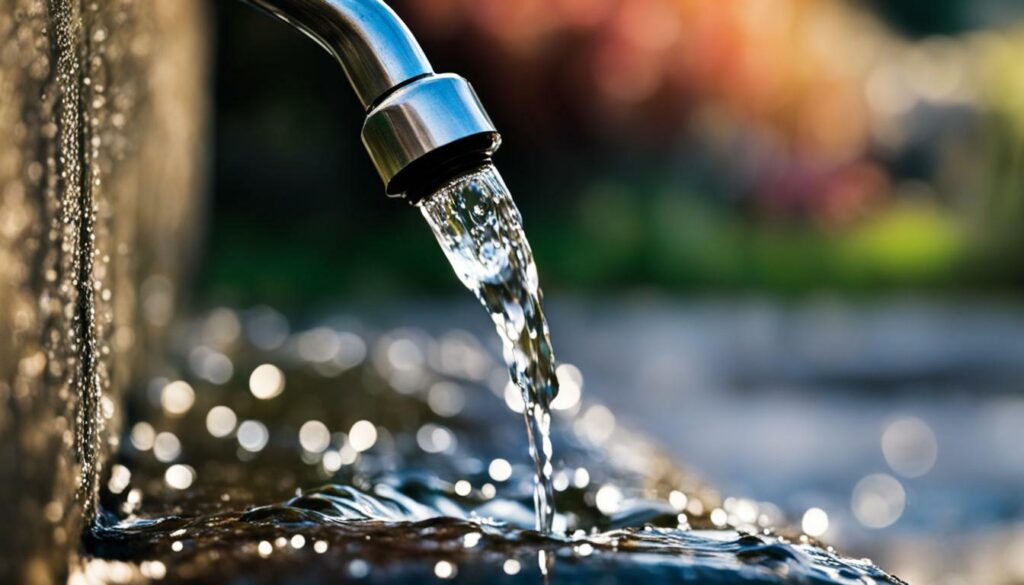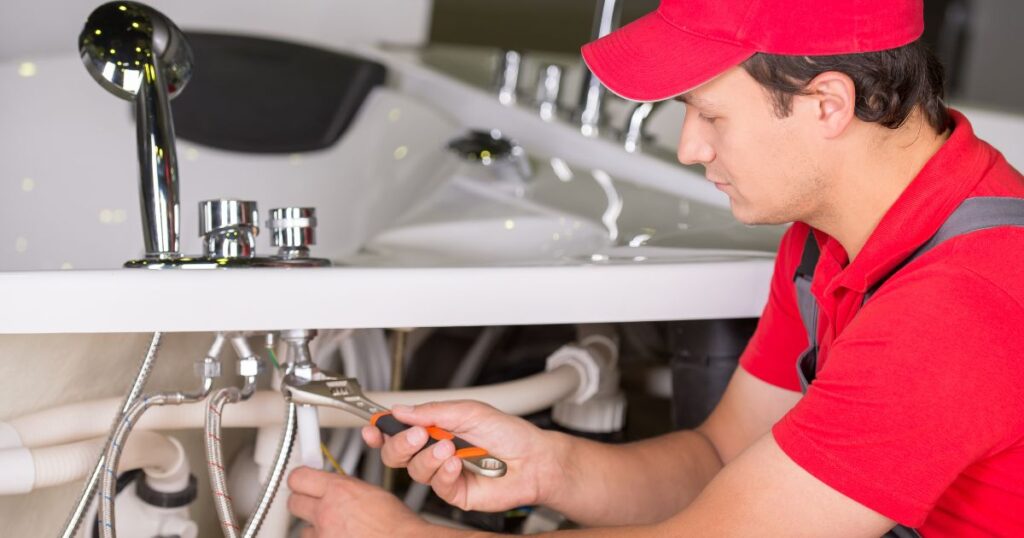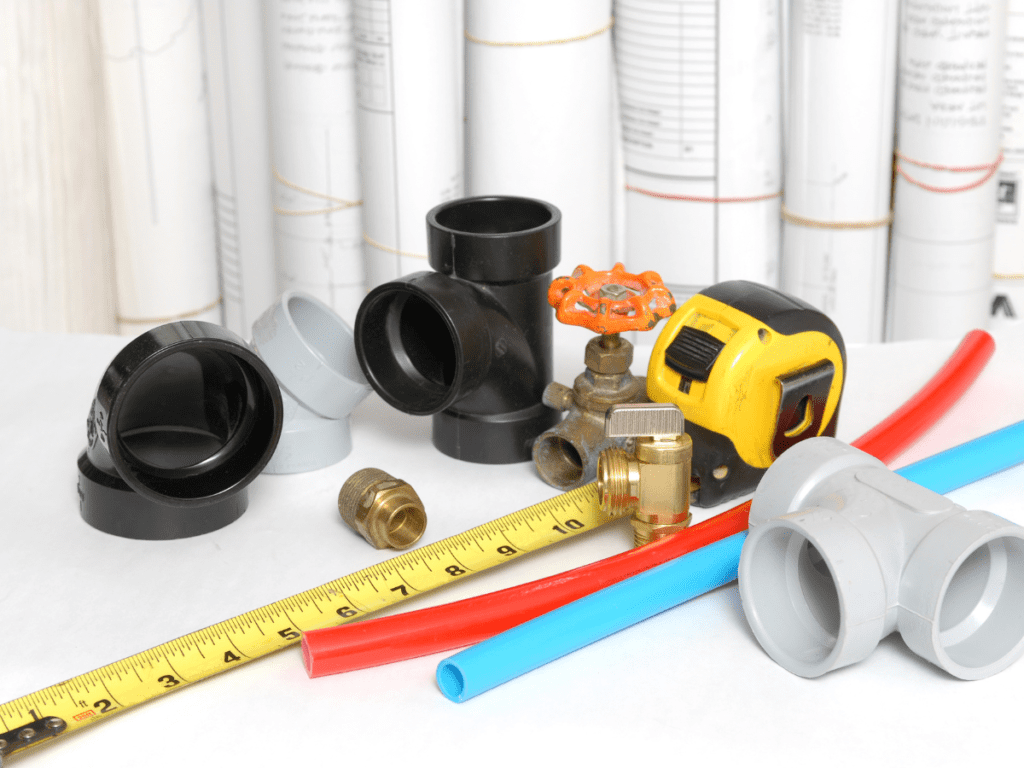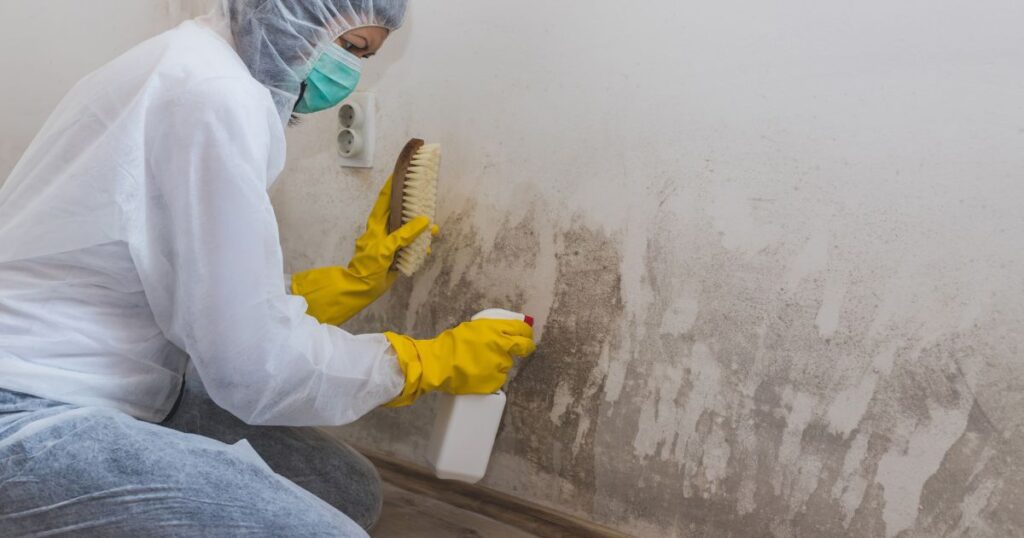
Difference Between Mold and Mildew
Mold and mildew are two common types of fungi that often go hand in hand with damp, moist environments. While they share some similarities, there are distinct differences between them.
Understanding these differences is crucial for identifying and addressing the specific problems they can cause. Let’s start by exploring mold.
Mold is a fungus that thrives in areas with high moisture levels and organic materials to feed on. It reproduces by releasing spores into the air, which can easily travel through your home or workplace.
Mold growth can be found on walls, ceilings, carpets, or furniture. Often appearing as black, green, or blue patches, mold can have a fuzzy or slimy texture, depending on the species.
Mildew, on the other hand, is another type of fungal growth but belongs to a different category than mold. It typically appears as white or gray patches and tends to be powdery or fluffy in texture.
Mildew usually grows on surfaces more exposed to moisture, such as bathroom tiles, shower curtains, and window sills. Although both mold and mildew thrive in damp areas and cause similar issues related to respiratory health problems if left unchecked, there are a few key distinctions between them.
One notable difference is their appearance – mold tends to be darker than mildew’s lighter shades. Another significant contrast between mold and mildew is their structure at a microscopic level.
The mold consists of multicellular filaments called hyphae that weave together to form visible colonies. These hyphae deeply penetrate porous materials like wood or drywall if given enough time.
On the other hand, mildew is classified as a superficial fungi growth that remains primarily on the surface it resides upon without penetrating further into materials. Due to its shallow growth, mildew can usually be removed more easily than deeply rooted molds.
Health concerns associated with mold exposure and mildew can cause allergic reactions and respiratory issues. However, the severity of the symptoms may vary depending on the individual’s sensitivity and the type of fungi present.
Some common health problems linked to mold and mildew exposure include skin rashes, coughing, sneezing, wheezing, asthma attacks, and in severe cases, fungal infections. Maintaining proper ventilation is crucial as a preventive measure against mold and mildew growth.
Ensuring good air circulation helps reduce moisture levels in your living spaces. Regularly cleaning and drying wet surfaces can also prevent the growth of these fungi.
If you find mildew in your bathroom or other areas prone to dampness, wiping it away with a bleach solution or using commercial mildew removers can effectively eliminate it. While mold and mildew are fungi that thrive in moist environments, their appearance, structure, and penetration depth into materials differ.
Recognizing these differences is essential for properly addressing any issues related to their growth. By taking preventive measures such as controlling humidity levels within your home or workplace and promptly addressing any water leaks or damp areas, you can minimize the risk of mold or mildew infestations that may negatively impact your health.
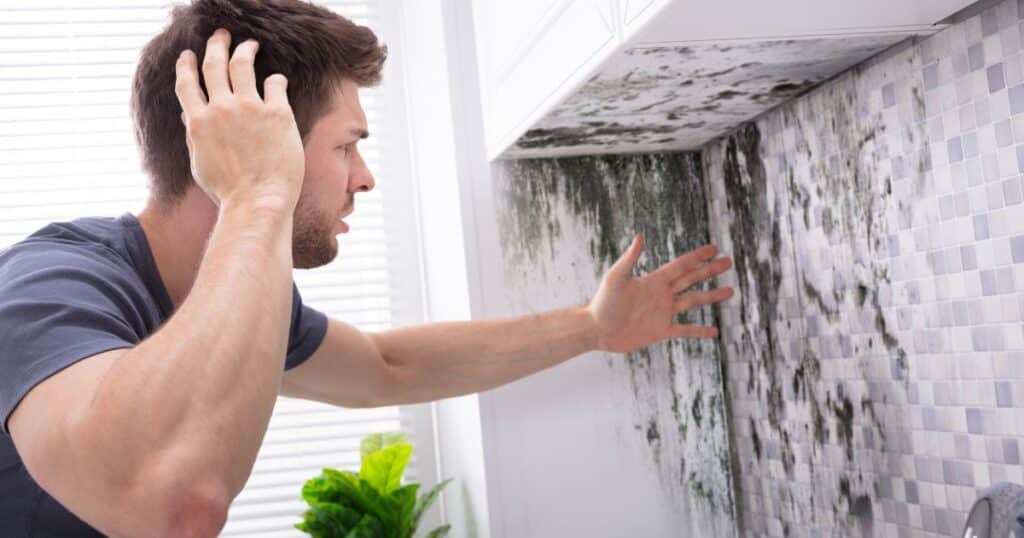
Mold Growth
Many people encounter a common problem in their homes, especially in damp and moist areas. Discovering mold patches spreading across your walls or ceilings can be quite unsettling. Not only does it look unsightly, but it can also pose serious health concerns if left untreated.
Mold is a type of fungus that thrives in moist environments. It reproduces by releasing tiny spores into the air, which can easily spread and settle on various surfaces.
Once these spores find a suitable moisture source, they form visible colonies. Common areas where mold can flourish include bathrooms, kitchens, basements, and other places with high humidity.
When mold starts to grow, it often appears as fuzzy patches in different colors like black, green, or even white. The texture may feel slimy or powdery, depending on the type of mold present.
It’s important to note that while mildew is also a type of fungus-like mold, it differs in appearance and characteristics. One key aspect of mold growth is its ability to thrive on organic matter such as wood or paper products.
The affected area becomes an ideal breeding ground for mold growth if your home has a water leak or flooding incident. Additionally, poor ventilation exacerbates the problem by trapping moisture indoors and creating an environment conducive to mold proliferation.
If you come across mold growth in your home, taking proper precautions before cleaning it yourself is crucial. Mold removal requires protective gear such as gloves and masks to prevent exposure to harmful spores.
The National Institute for Occupational Safety and Health advises using an N-95 respirator mask when dealing with large areas of mold-infested surfaces. To clean the affected area effectively, start by isolating it from the remaining area using plastic sheets or tarps.
This containment helps prevent further spreading of spores during the cleaning process. Use a mild detergent and warm water to scrub the mold-infested surfaces thoroughly.
Avoid using bleach solutions unless the surface is non-porous, as it may not fully penetrate porous materials where mold can hide. It’s important to note that proper mold removal involves more than just removing visible growth.
It also requires addressing the underlying moisture problem to prevent future infestations. Without eliminating the source of moisture, the mold will likely return, even after a thorough cleaning.
Consider fixing leaks or improving ventilation in your home to create an inhospitable environment for mold growth. Mold growth can persist in homes, particularly in moist environments.
Cleaning and addressing the underlying moisture problem is crucial to prevent further health risks and damage. By understanding how mold grows and following proper cleaning procedures with essential precautions, you can effectively manage and mitigate its presence in your living spaces.
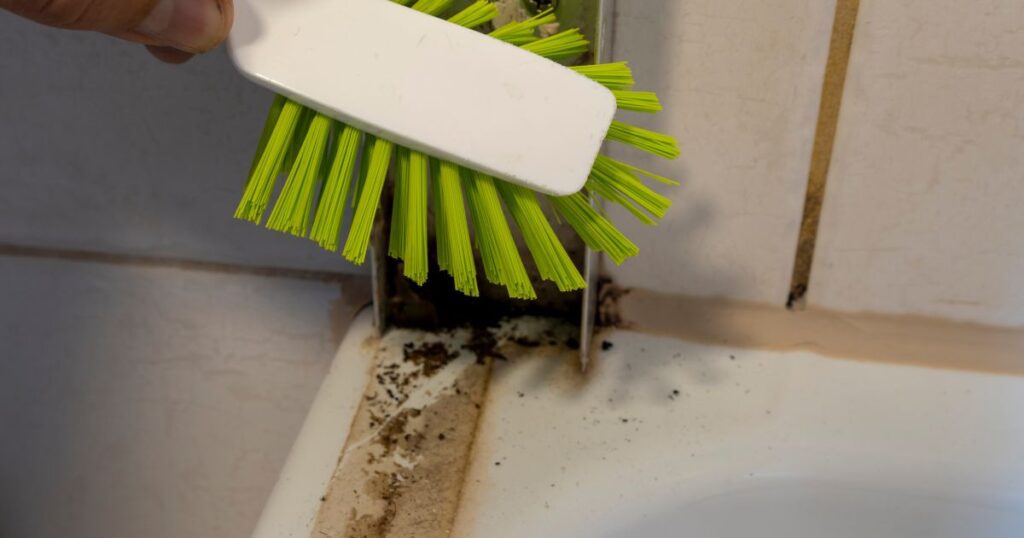
Mildew Spores
In the early stages of discussing the difference between mold and mildew, it’s important to understand the role of spores. Like mold, mildew also produces spores that can float in the air and land on different surfaces.
However, there are some differences in the characteristics and behavior of mildew spores compared to mold spores. Are typically smaller in size compared to mold spores.
They are microscopic and can easily become airborne when disturbed. Due to their lightweight nature, mildew spores spread more easily through the air.
This means that even a minor disturbance or airflow can carry them from one area to another. Unlike mold growth, which thrives on organic materials like wood or paper, mildew grows on damp surfaces like bathroom tiles, fabrics, or leather goods.
Mildew loves unchecked moisture and humidity levels above 55%. This is why you often find it lurking in bathrooms or laundry rooms where humidity levels tend to be higher.
Regarding health effects, exposure to mildew and mold can cause respiratory issues for individuals with sensitivities. However, some people may experience more severe reactions when exposed to certain mold types than mildew.
For instance, inhaling certain types of toxic black molds can result in severe breathing difficulties and even trigger asthma attacks for those who have asthma. Proper precautions should be taken while cleaning affected areas to prevent the spread of both mildew and mold spores.
It is recommended by experts at the National Institute for Occupational Safety and Health (NIOSH) that individuals wear protective gear such as gloves, goggles, and masks when handling either substance. These precautions help minimize direct contact with any potentially harmful particles.
To effectively remove both mildew and mold from surfaces like tiles or fabrics without damaging them, using a mixture of water and a mild detergent is usually sufficient. However, for more serious infestations or growth in hidden areas like wall cavities, it is advisable to seek professional help.
This is because mold growth in such hidden areas may require specialized tools and techniques for complete removal. While mildew and mold produce spores that can harm our health when exposed, they have some differences.
are smaller in size and tend to spread more easily through the air. Mildew thrives in damp, humid environments, such as bathrooms or laundry rooms.
On the other hand, different types of mold can cause more severe health issues than mildew. Whether dealing with mildew or mold growth, taking proper precautions and following appropriate cleaning methods is crucial to ensure a safe and healthy living environment.

Mold Exposure
can have serious consequences for your health. When mold grows in your home, it releases tiny mold spores into the air.
These spores can easily be inhaled, leading to various health problems. Unlike mildew, which typically grows on surfaces like bathroom tiles or clothing, mold can infest entire rooms and even spread through the HVAC system to other areas of your home.
One of the main concerns with mold exposure is respiratory issues. When you breathe in mold spores, they can irritate your airways and cause difficulty breathing.
People with pre-existing conditions like asthma may experience more frequent attacks when exposed to mold. Even if you don’t have asthma, you may still suffer from coughing, wheezing, or similar allergic reactions when exposed to high mold levels.
Protective gear is essential when dealing with severe mold problems. If you’re attempting to remove mold, wearing gloves, goggles, and a mask covering your nose and mouth is crucial.
These precautions are necessary because disturbing the mold can release more spores into the air and exacerbate the situation. Occupational safety guidelines set by organizations such as the National Institute for Occupational Safety and Health (NIOSH) provide recommendations for professionals who deal with extensive mold removal situations.
These guidelines emphasize using proper protective gear to prevent inhaling harmful spores during remediation processes. It’s important to note that mildew and mold can cause health issues if left unaddressed.
While mildew is generally less harmful than molds like black mold (Stachybotrys chartarum), prolonged exposure to any fungi can lead to respiratory problems. Removing mold from your home should be approached carefully due to the potential health risks associated with exposure.
It’s advisable to consult a professional handling such situations since they have the expertise and tools necessary for safe removal. Regarding exposure risks, mold poses a more significant threat than mildew.
Mold spores released into the air can lead to respiratory issues, especially for those with pre-existing conditions like asthma. Protective gear is essential when dealing with severe mold problems to prevent inhaling harmful spores.
Both mold and mildew can cause health problems if left untreated, but mold generally requires more extensive remediation. Consulting a professional for safe removal is highly recommended to ensure the well-being of everyone in your home.
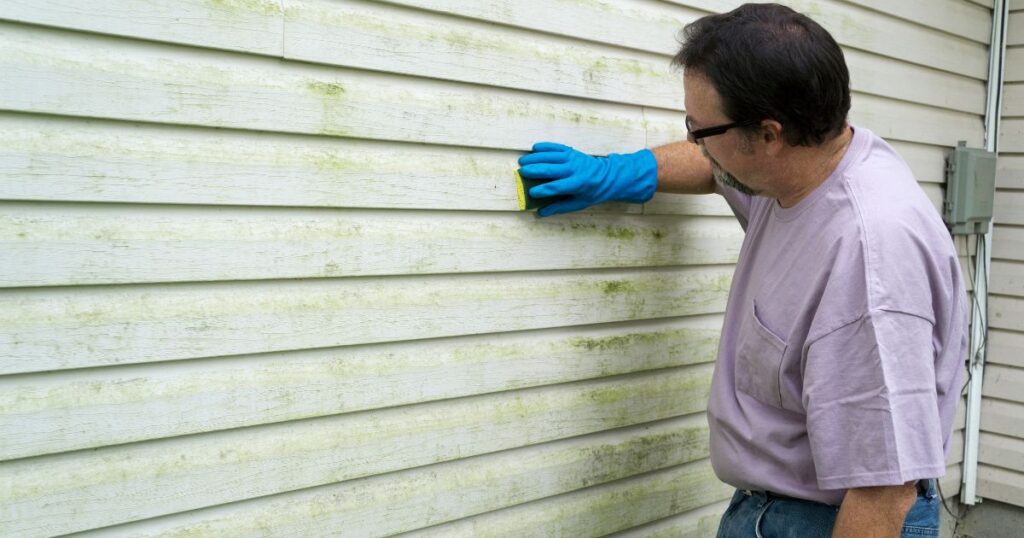
Conclusion
Understanding mold and mildew is crucial for maintaining a healthy living environment. Mold growth can be a serious issue, as it releases mold spores into the air that can cause a range of health concerns.
Unlike mildew, which thrives on moist areas and organic matter, mold can grow in various conditions and may even find its way into your HVAC system. When dealing with mold or mildew, it’s important to prioritize safety.
Protective gear such as gloves, masks, and goggles should be worn during cleaning to prevent any potential health effects from exposure to mold spores. While mildew can often be removed with a simple solution of mild detergent or bleach diluted in water, tackling mold requires more thorough measures.
It’s best to consult professional help specializing in mold removal to remove mold growth effectively. They have the expertise and equipment to handle the situation safely and efficiently.
Moreover, they can assess the moisture levels in your home or property and recommend preventing future occurrences. It’s worth noting that mold and mildew can cause similar allergic reactions, such as sneezing, coughing, runny nose, or skin irritation in susceptible individuals.
However, reducing excess moisture in your living space will significantly decrease the likelihood of experiencing these symptoms caused by either substance. By maintaining proper ventilation in bathrooms and kitchens, using exhaust fans when cooking or showering, promptly repairing any leaks or water damage, and regularly cleaning surfaces prone to dampness, you can create an inhospitable environment for mold and mildew.
Don’t let the presence of either substance become a cause for alarm. By being proactive about cleanliness, maintaining optimal moisture levels, and immediately addressing any signs of growth, you can ensure a healthier living space for yourself and your loved ones. It’s always better to take preventive measures rather than deal with costly remediation processes down the line. So stay informed, stay vigilant, and enjoy the peace of mind that comes with a mold and mildew-free environment.

